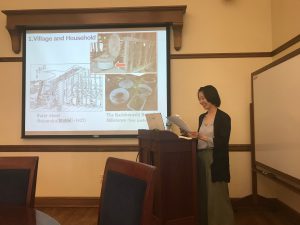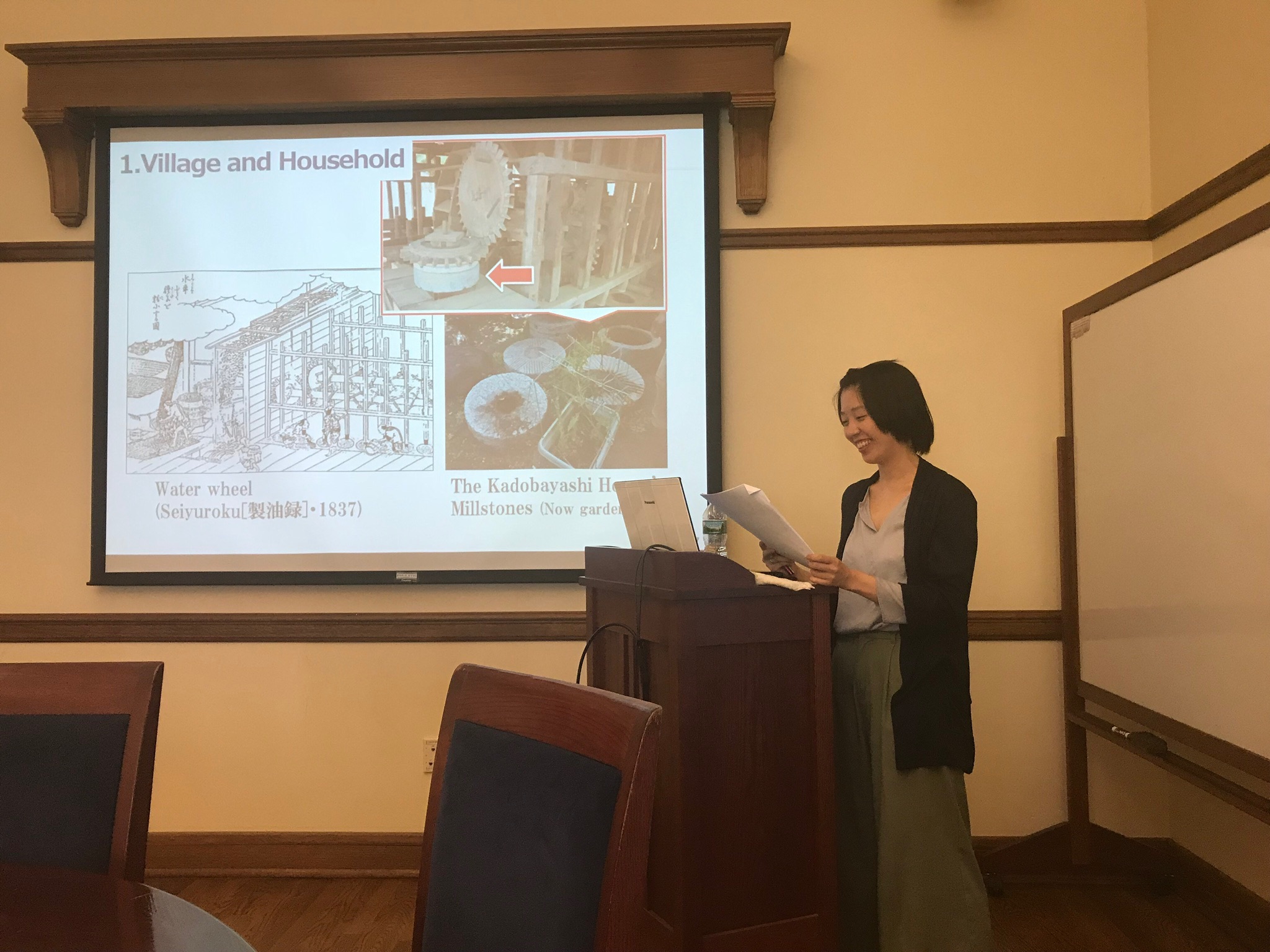The first workshop of our project was held at Osaka City University, from 6 pm to 8 pm on Wed., November 8, 2017.
Presentation by Mio Shimazaki

Mio Shimazaki (Research Fellow, Urban-Culture Research Center, Osaka City University), who would be provided with an opportunity to conduct research at Yale University and National University of Singapore, gave a presentation about her research. She is engaged in the history of early modern Japan, particularly Izumi, a center of oil production just south of Osaka. Her research brings to light various aspects of oil production processes, and the lived experiences of the workers involved. The presentation focused on the unskilled manual laborers, known as hatarakinin, who handled actual physical tasks of oil production, and analyzed the changes in Izumi’s rural society that were driven by such production.
“Influence of the Management of Oil Producers on the Local Social Structure in Early Modern Izumi: Introducing a Case Concerning Workforce Composition”
How did the production and distribution of oil influence the rural communities involved? The aim of this presentation was to identify the relationships between oil production and rural society. Shimazaki analyzed the characteristics of oil production processes in Izumi, and also considered their spatial structures and workforce composition. Specicifically, she focused on Kadobayashi Sagohei, a house of oil producers in Ikedashimo Village. She also compared the case in Izumi with conditions in Osaka, which was where the oil distribution system was centered on, and also the most famous center of oil production. Her discussion comprised the following points.
Firstly, among the hatarakinin who sustained the oil production industry in Osaka, there were two groups: those who had come from rural areas and lived in kuchiireyado (tenement rental lodgings); and marginalized urban dwellers who had fallen into poverty and stayed in uragashiya, small houses located along back streets. Those two groups formed a restive element in the city. Secondly, oil producers in Izumi hired not only day laborers, but also local youth during the low season for agriculture. This can be considered a distinctive employment practice in rural areas, compared with Osaka where the market for day laborers was maturing. These employment opportunities meant that oil production was a major industry involved in the reproduction of local society. Thirdly, through the analysis of a dispute over wages, Shimazaki discussed the characteristics of hatarakinin groups. While they were typically unskilled workers and thus rarely organized themselves into a collective, they did start group confrontations against employers and agents over issues such as the lowering of their wages. This was seen in both Osaka and Izumi, but in the latter, it was the local youth who took the initiative in the confrontations. From the above points, Shimazaki illuminated the role played by the oil production industry in 19th-century local societies, in which the production and circulation of goods was integral. She also noted that such oil production brought in a disruptive element to these local societies as well.
Q&A Session
After some factual confirmation, one of the audience asked a searching question on the hatarakinin. In introducing these workers to employers, how did agents act as guarantors and provide references? Shimazaki explained this by referring to articles on the ukejō personal guarantee slips of this period, and the guarantors who issued them. In all, the presentation and the Q&A session deepened our understanding of the oil production industry in early modern Osaka, and the workers and social groups involved in it.
